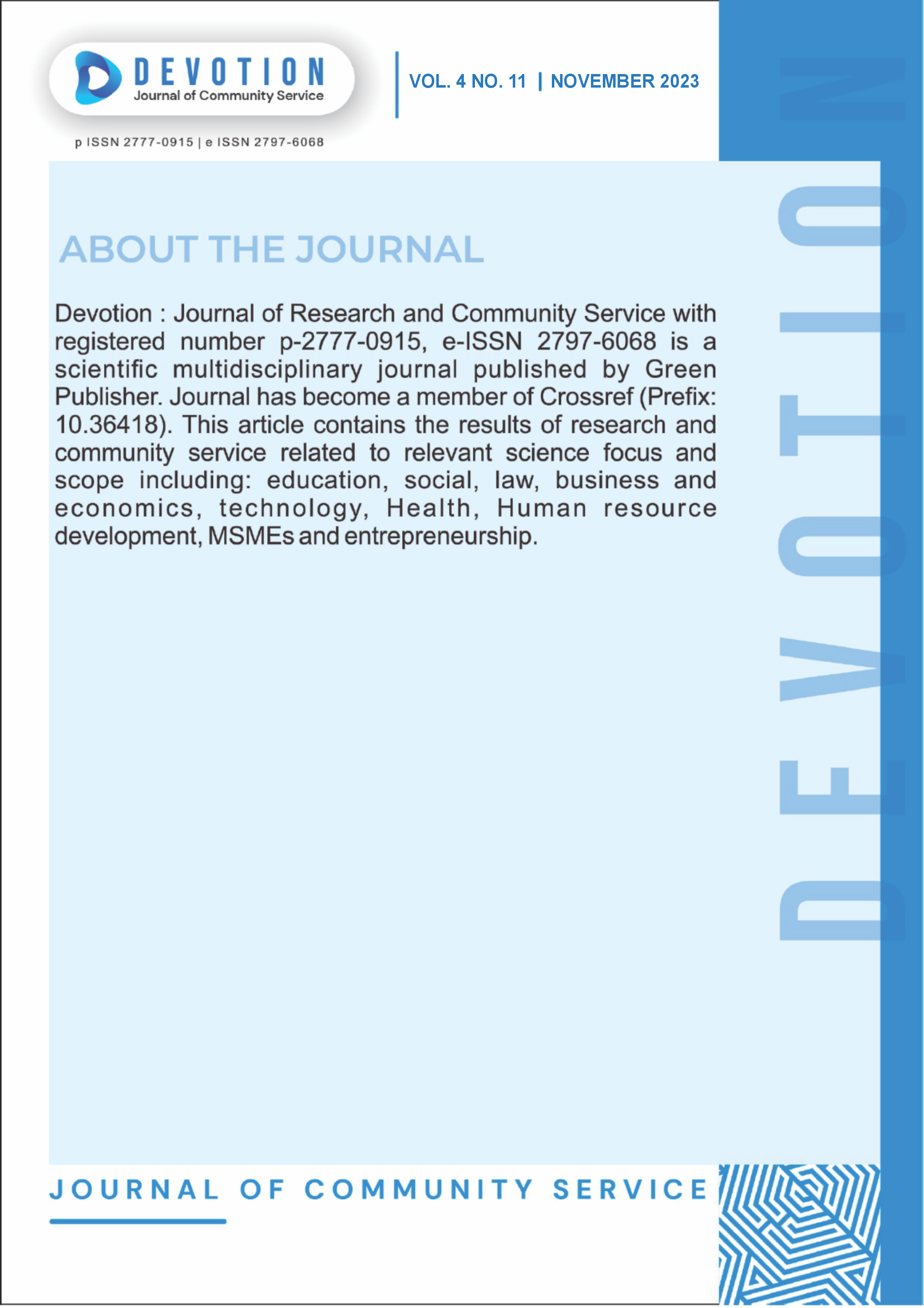The Influence of Co-Curricular Learning on Cadets' Skills in the Construction and Stability of Ships Course at Malahayati Maritime Polytechnic
DOI:
https://doi.org/10.59188/devotion.v4i11.594Keywords:
Co-curricular learning, learning, skillsAbstract
To achieve the goals of national education, efforts are needed, such as maximizing the learning experiences of students because learning experiences greatly influence learning outcomes, especially in vocational education. Students' learning experiences can be accommodated through three activities: curricular, extracurricular, and co-curricular. While curricular and extracurricular activities are frequently heard of and discussed, it seems that co-curricular activities have not been fully utilized for strengthening learning. Co-curricular activities are carried out to reinforce, deepen, or enrich curricular activities. They are conducted outside regular class hours (including during breaks) and can take place in school or off-campus to support curricular implementation. Co-curricular activities must directly support the curricular activities and the students' learning interests with an emphasis on a more realistic context. Therefore, it is not solely focused on the curricular content, as it emphasizes real-world problem contexts, co-curricular activities have numerous benefits for students. Some of the benefits of co-curricular activities include character development, the cultivation of good values, the development of social skills and leadership abilities, the promotion of awareness and appreciation of diversity, increased enthusiasm in addressing evolving global issues, and the development of literacy and numeracy competencies. This can also be observed at Malahayati School of Maritime Polytechnic where co-curricular learning is one of the mandatory activities applied to cadets to help reinforce the learning materials they acquire in the classroom.
Published
Issue
Section
License
Copyright (c) 2023 Fazri Hermanto, Dedy Kurniadi

This work is licensed under a Creative Commons Attribution-ShareAlike 4.0 International License.
Authors who publish with this journal agree to the following terms:
- Authors retain copyright and grant the journal right of first publication with the work simultaneously licensed under a Creative Commons Attribution-ShareAlike 4.0 International. that allows others to share the work with an acknowledgement of the work's authorship and initial publication in this journal.
- Authors are able to enter into separate, additional contractual arrangements for the non-exclusive distribution of the journal's published version of the work (e.g., post it to an institutional repository or publish it in a book), with an acknowledgement of its initial publication in this journal.
- Authors are permitted and encouraged to post their work online (e.g., in institutional repositories or on their website) prior to and during the submission process, as it can lead to productive exchanges, as well as earlier and greater citation of published work.













